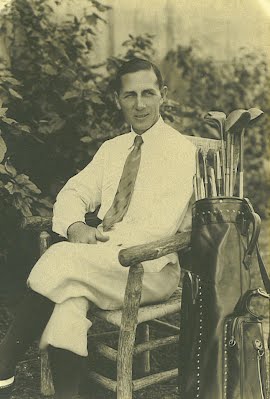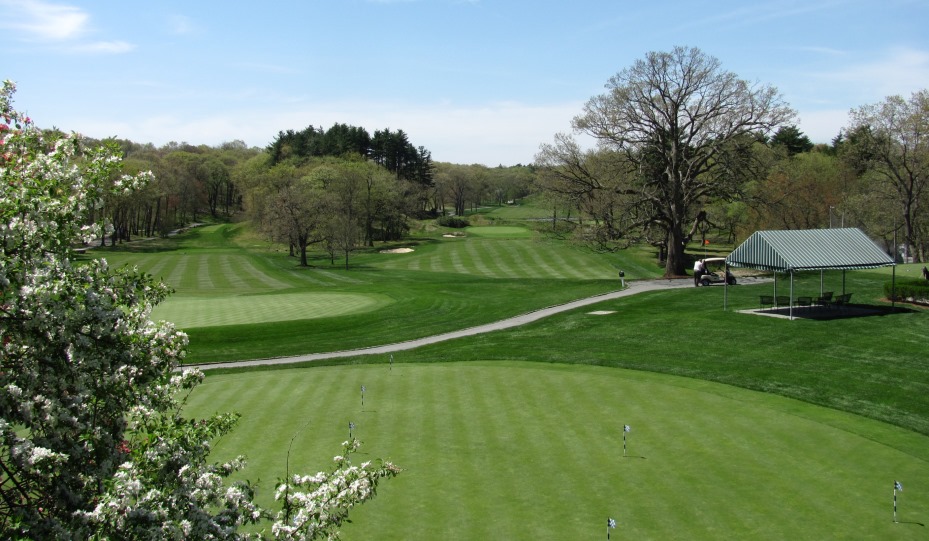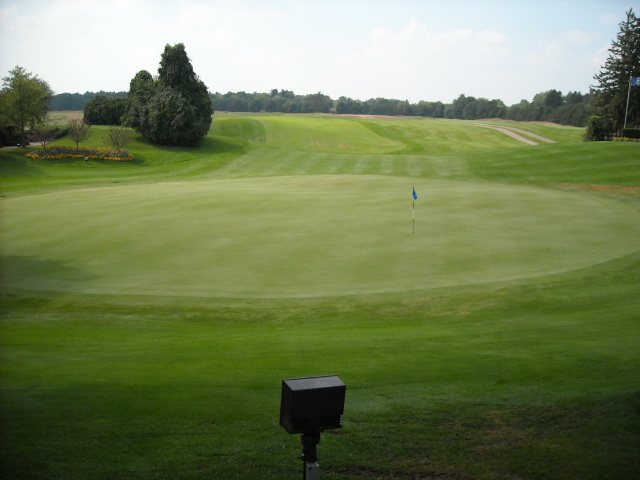
Wilfrid Ewart “Wilfie” Reid (3 November 1884 – 24 November 1973) was an English professional golfer and golf course designer. Reid was born in Bulwell, Nottingham, England, and died in West Palm Beach, Florida, United States. Reid studied club and ball making under Tommy Armour’s father, Willie, in Edinburgh, Scotland.
A scratch golfer at 15, Reid turned professional at 17 and was a protégé of Harry Vardon who helped him get a club professional job at La Boulie Golf Club in Versailles, France, in 1901 for roughly five years. He later was the professional at Banstead Downs Golf Club in Sutton, London, England, for roughly nine years and a successful tournament player.
Reid was a fine competitive golfer despite being small of stature, and he beat his mentor, Vardon, on several occasions, was never short of confidence. In 1913 Reid visited America with Vardon and Ted Ray where they played in a number of tournaments including the famous 1913 U.S. Open in which he tied for 16th. Reid tied Vardon for the 2nd round lead and played with Francis Ouimet in the 3rd round. In 1915 he tied 10th. His best finish in the U.S. Open was a T-4 in 1916.
In 1915 Reid immigrated to America at the invitation of Clarence H. Geist to be golf professional at Seaview Golf Club in Galloway, New Jersey, after the outbreak of World War I. He later, at the suggestion of the DuPont family, became the golf professional at the Wilmington Country Club, Wilmington, Delaware. He became a member of the PGA of America in 1917 and was appointed to the national PGA Executive Committee as a vice president at large, a position he held for two years.
In August 1920 he was elected vice-president of the PGA of America and he was reelected in 1921. In 1920 and 1921 he also held the office of secretary of the Southeastern Section PGA. That year in December of 1921 he attended the founding meeting of the Philadelphia Section PGA and was a member of the organizing committee. Later in 1929 he was the president of the Michigan Section PGA for three years (see photos below).

Reid obtained U.S. citizenship in 1921. Reid served as a professional at several of America’s top clubs, including Country Club of Detroit, Grosse Pte. Farms, Michigan, Beverly Country Club, Chicago, Illinois, Broadmoor Golf Club, Colorado Springs, Colorado, Seminole Golf Club, North Palm Beach, Florida, and Atlantic City Country Club, Northfield, New Jersey. He won the 1926 Michigan PGA Championship and had 26 holes-in-one in his long playing career. The border of his stationery, that he used to send to club-makers such as George Izett of Bailey & Izett Inc. his customers’ golf club orders listed so many of his accomplishments that there was very little room left for him to write his message (see photos below).

Not only was Reid a wonderful golf teacher, his greatest accomplishments were golf course designing. Reid began designing golf courses at an early age and laid out courses in Europe and Britain before settling in the United States. He once estimated that he had designed 58 courses and remodelled some 43 others during his design career. While based in Michigan during the 1920s, he partnered with another club professional, William Connellan. The firm of Reid and Connellan designed some 20 courses in that state alone. Reid retired to Florida in the early 1950s and consistently improved his game in both social and competitive rounds. Even into old age he continued to “beat his age” in score on his birthday. In 1985, Reid was posthumously inducted into the Michigan Golf Hall of Fame.
Reid designed courses in the following states: California (Olympic Club – original Lakeside Golf Club course, San Francisco, 1917), Delaware (see below), and Michigan (see below). In addition he designed courses in England, France (La Boulie Golf Club – La Vallee course), Belgium and Canada.
Often, his first name gets misspelled as “Wilfred” in documents, such as in the movie and book The Greatest Game Ever Played. Occasionally, his middle initial is incorrectly documented “A.” as well.
Related posts
Golf Architects/Designers: Dick Wilson
on Monday 12, MarchLouis Sibbett (“Dick”) Wilson was among the most respected of post-World War II period...
Golf Architects/Designers: Bruce Devlin
on Monday 10, OctoberBruce William Devlin (born 10 October 1937) is an Australian professional golfer, sportscaster and...
